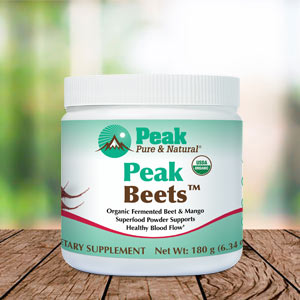Get Easy Health Digest™ in your inbox and don’t miss a thing when you subscribe today. Plus, get the free bonus report, Mother Nature’s Tips, Tricks and Remedies for Cholesterol, Blood Pressure & Blood Sugar as my way of saying welcome to the community!
Why gargling with red wine may be the next health craze

If you’re someone who enjoys having a glass of Cabernet or Merlot with dinner, hopefully you already know all about the heart-healthy benefits you’re indulging in.
Red wine grapes are known for the high amounts of polyphenols they contain. Polyphenols are the natural antioxidants that lower our risk of heart disease.
Polyphenols from the foods we eat work in our gut to increase helpful bacteria, reduce harmful bacteria and prevent the inflammation that’s behind heart disease and other chronic conditions.
But there’s a new and delightful twist to the story of red wine, polyphenols and your health…
Leave it to Spain, a country that grows more than ten varieties of red wine grapes, to figure out that red wine is good for much, much more than the heart — and not in a way you’d expect, either.
Red wine’s benefits start in the mouth
It’s kind of counterintuitive to think that red wine could do anything good for your mouth. After all, when we think about foods that stain our teeth, red wine tops the list.
But a Spanish research study, just published in the Journal of Agricultural and Food Chemistry, has found that the anti-bacterial action that polyphenols have in the gut also play a part in the mouth.
Lead researcher M. Victoria Moreno-Arribas and her colleagues looked at two main polyphenols found in red wine, caffeic acid and p-coumaric acid, and their effect on three harmful oral bacteria: Fusobacterium nucleatum, Streptococcus mutans and Porphyromonas gingivalis.
Their tests showed that these two polyphenols in particular combine with healthy mouth bacteria to prevent tooth decay.
More importantly for our discussion here, their analysis determined that the caffeic acid and p-coumaric acid in red wine are the most effective polyphenols at preventing oral bacteria from attaching to healthy gum tissue and causing gingivitis, or gum disease.
Now, if you consider that gum disease leaves you wide open for cancer, diabetes, kidney disease and arthritis, then by association, that glass of red wine just became a disease-fighting powerhouse!
Red wine the healthy way
To reap the best health benefits from drinking red wine, don’t make the one mistake that can negate the positive outcomes you’ve just read about…
That means if you want to use red wine to fight gum disease and lower your risk for heart disease, diabetes, arthritis, kidney disease and cancer, remember to drink it moderately.
That equates to two drinks per day for men and one drink per day for women.
One more thing …
You might be surprised to learn that you could get these protective benefits without even swallowing red wine.
When it comes to preventing cavities and gum disease, most people would turn to mouthwash before red wine as the “swish” of choice. But most mouthwashes on the market are full of chemicals, and increase the risk of diabetes.
In fact, using these commercially-produced mouthwashes to get fresh breath can also give you high blood pressure because they interfere with your body’s natural production of nitric oxide — a compound necessary for healthy arteries.
So if you want to turn an inexpensive bottle of red wine into a safe, effective and tasty mouthwash, do like they do at wine tastings… Take a sip, give it a swirl across your tongue and around your teeth and gums, and just spit it out.
Editor’s note: Do you know that poor gums and teeth are linked to the number one killer in America? Not to mention kidney disease… rheumatoid arthritis… Parkinson’s disease… depression… and so much more. Click here to discover America’s Hidden Dental Health Crisis: How to protect yourself and your family from this dangerous public health peril!
Sources:
- Skip the guilt: Red wine could protect your oral health — Medical News Today
- Inhibition of Oral Pathogens Adhesion to Human Gingival Fibroblasts by Wine Polyphenols Alone and in Combination with an Oral Probiotic — Journal of Agricultural and Food Chemistry














